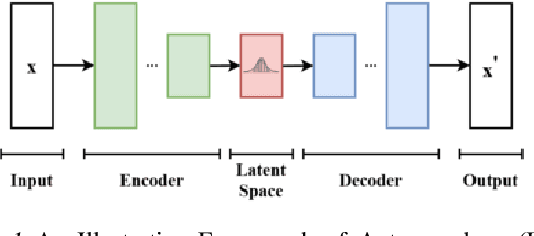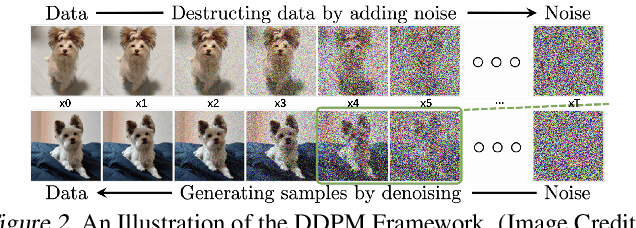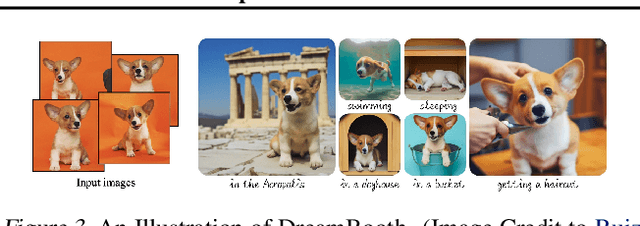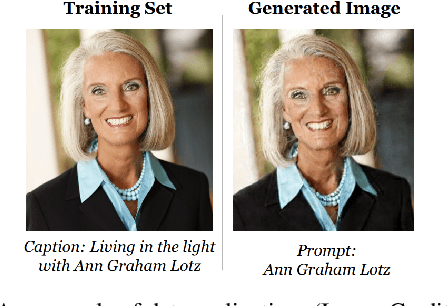Hongzhi Wen
Revisiting the Graph Reasoning Ability of Large Language Models: Case Studies in Translation, Connectivity and Shortest Path
Aug 18, 2024



Abstract:Large Language Models (LLMs) have achieved great success in various reasoning tasks. In this work, we focus on the graph reasoning ability of LLMs. Although theoretical studies proved that LLMs are capable of handling graph reasoning tasks, empirical evaluations reveal numerous failures. To deepen our understanding on this discrepancy, we revisit the ability of LLMs on three fundamental graph tasks: graph description translation, graph connectivity, and the shortest-path problem. Our findings suggest that LLMs can fail to understand graph structures through text descriptions and exhibit varying performance for all these three fundamental tasks. Meanwhile, we perform a real-world investigation on knowledge graphs and make consistent observations with our findings. The codes and datasets are available.
Learning on Graphs with Large Language Models(LLMs): A Deep Dive into Model Robustness
Jul 16, 2024



Abstract:Large Language Models (LLMs) have demonstrated remarkable performance across various natural language processing tasks. Recently, several LLMs-based pipelines have been developed to enhance learning on graphs with text attributes, showcasing promising performance. However, graphs are well-known to be susceptible to adversarial attacks and it remains unclear whether LLMs exhibit robustness in learning on graphs. To address this gap, our work aims to explore the potential of LLMs in the context of adversarial attacks on graphs. Specifically, we investigate the robustness against graph structural and textual perturbations in terms of two dimensions: LLMs-as-Enhancers and LLMs-as-Predictors. Through extensive experiments, we find that, compared to shallow models, both LLMs-as-Enhancers and LLMs-as-Predictors offer superior robustness against structural and textual attacks.Based on these findings, we carried out additional analyses to investigate the underlying causes. Furthermore, we have made our benchmark library openly available to facilitate quick and fair evaluations, and to encourage ongoing innovative research in this field.
IterAlign: Iterative Constitutional Alignment of Large Language Models
Mar 27, 2024



Abstract:With the rapid development of large language models (LLMs), aligning LLMs with human values and societal norms to ensure their reliability and safety has become crucial. Reinforcement learning with human feedback (RLHF) and Constitutional AI (CAI) have been proposed for LLM alignment. However, these methods require either heavy human annotations or explicitly pre-defined constitutions, which are labor-intensive and resource-consuming. To overcome these drawbacks, we study constitution-based LLM alignment and propose a data-driven constitution discovery and self-alignment framework called IterAlign. IterAlign leverages red teaming to unveil the weaknesses of an LLM and automatically discovers new constitutions using a stronger LLM. These constitutions are then used to guide self-correction of the base LLM. Such a constitution discovery pipeline can be run iteratively and automatically to discover new constitutions that specifically target the alignment gaps in the current LLM. Empirical results on several safety benchmark datasets and multiple base LLMs show that IterAlign successfully improves truthfulness, helpfulness, harmlessness and honesty, improving the LLM alignment by up to $13.5\%$ in harmlessness.
Investigating Out-of-Distribution Generalization of GNNs: An Architecture Perspective
Feb 14, 2024Abstract:Graph neural networks (GNNs) have exhibited remarkable performance under the assumption that test data comes from the same distribution of training data. However, in real-world scenarios, this assumption may not always be valid. Consequently, there is a growing focus on exploring the Out-of-Distribution (OOD) problem in the context of graphs. Most existing efforts have primarily concentrated on improving graph OOD generalization from two \textbf{model-agnostic} perspectives: data-driven methods and strategy-based learning. However, there has been limited attention dedicated to investigating the impact of well-known \textbf{GNN model architectures} on graph OOD generalization, which is orthogonal to existing research. In this work, we provide the first comprehensive investigation of OOD generalization on graphs from an architecture perspective, by examining the common building blocks of modern GNNs. Through extensive experiments, we reveal that both the graph self-attention mechanism and the decoupled architecture contribute positively to graph OOD generalization. In contrast, we observe that the linear classification layer tends to compromise graph OOD generalization capability. Furthermore, we provide in-depth theoretical insights and discussions to underpin these discoveries. These insights have empowered us to develop a novel GNN backbone model, DGAT, designed to harness the robust properties of both graph self-attention mechanism and the decoupled architecture. Extensive experimental results demonstrate the effectiveness of our model under graph OOD, exhibiting substantial and consistent enhancements across various training strategies.
Copyright Protection in Generative AI: A Technical Perspective
Feb 04, 2024



Abstract:Generative AI has witnessed rapid advancement in recent years, expanding their capabilities to create synthesized content such as text, images, audio, and code. The high fidelity and authenticity of contents generated by these Deep Generative Models (DGMs) have sparked significant copyright concerns. There have been various legal debates on how to effectively safeguard copyrights in DGMs. This work delves into this issue by providing a comprehensive overview of copyright protection from a technical perspective. We examine from two distinct viewpoints: the copyrights pertaining to the source data held by the data owners and those of the generative models maintained by the model builders. For data copyright, we delve into methods data owners can protect their content and DGMs can be utilized without infringing upon these rights. For model copyright, our discussion extends to strategies for preventing model theft and identifying outputs generated by specific models. Finally, we highlight the limitations of existing techniques and identify areas that remain unexplored. Furthermore, we discuss prospective directions for the future of copyright protection, underscoring its importance for the sustainable and ethical development of Generative AI.
Label-free Node Classification on Graphs with Large Language Models
Oct 12, 2023



Abstract:In recent years, there have been remarkable advancements in node classification achieved by Graph Neural Networks (GNNs). However, they necessitate abundant high-quality labels to ensure promising performance. In contrast, Large Language Models (LLMs) exhibit impressive zero-shot proficiency on text-attributed graphs. Yet, they face challenges in efficiently processing structural data and suffer from high inference costs. In light of these observations, this work introduces a label-free node classification on graphs with LLMs pipeline, LLM-GNN. It amalgamates the strengths of both GNNs and LLMs while mitigating their limitations. Specifically, LLMs are leveraged to annotate a small portion of nodes and then GNNs are trained on LLMs' annotations to make predictions for the remaining large portion of nodes. The implementation of LLM-GNN faces a unique challenge: how can we actively select nodes for LLMs to annotate and consequently enhance the GNN training? How can we leverage LLMs to obtain annotations of high quality, representativeness, and diversity, thereby enhancing GNN performance with less cost? To tackle this challenge, we develop an annotation quality heuristic and leverage the confidence scores derived from LLMs to advanced node selection. Comprehensive experimental results validate the effectiveness of LLM-GNN. In particular, LLM-GNN can achieve an accuracy of 74.9% on a vast-scale dataset \products with a cost less than 1 dollar.
Amazon-M2: A Multilingual Multi-locale Shopping Session Dataset for Recommendation and Text Generation
Jul 19, 2023Abstract:Modeling customer shopping intentions is a crucial task for e-commerce, as it directly impacts user experience and engagement. Thus, accurately understanding customer preferences is essential for providing personalized recommendations. Session-based recommendation, which utilizes customer session data to predict their next interaction, has become increasingly popular. However, existing session datasets have limitations in terms of item attributes, user diversity, and dataset scale. As a result, they cannot comprehensively capture the spectrum of user behaviors and preferences. To bridge this gap, we present the Amazon Multilingual Multi-locale Shopping Session Dataset, namely Amazon-M2. It is the first multilingual dataset consisting of millions of user sessions from six different locales, where the major languages of products are English, German, Japanese, French, Italian, and Spanish. Remarkably, the dataset can help us enhance personalization and understanding of user preferences, which can benefit various existing tasks as well as enable new tasks. To test the potential of the dataset, we introduce three tasks in this work: (1) next-product recommendation, (2) next-product recommendation with domain shifts, and (3) next-product title generation. With the above tasks, we benchmark a range of algorithms on our proposed dataset, drawing new insights for further research and practice. In addition, based on the proposed dataset and tasks, we hosted a competition in the KDD CUP 2023 and have attracted thousands of users and submissions. The winning solutions and the associated workshop can be accessed at our website https://kddcup23.github.io/.
Exploring the Potential of Large Language Models in Learning on Graphs
Jul 10, 2023Abstract:Learning on Graphs has attracted immense attention due to its wide real-world applications. The most popular pipeline for learning on graphs with textual node attributes primarily relies on Graph Neural Networks (GNNs), and utilizes shallow text embedding as initial node representations, which has limitations in general knowledge and profound semantic understanding. In recent years, Large Language Models (LLMs) have been proven to possess extensive common knowledge and powerful semantic comprehension abilities that have revolutionized existing workflows to handle text data. In this paper, we aim to explore the potential of LLMs in graph machine learning, especially the node classification task, and investigate two possible pipelines: LLMs-as-Enhancers and LLMs-as-Predictors. The former leverages LLMs to enhance nodes' text attributes with their massive knowledge and then generate predictions through GNNs. The latter attempts to directly employ LLMs as standalone predictors. We conduct comprehensive and systematical studies on these two pipelines under various settings. From comprehensive empirical results, we make original observations and find new insights that open new possibilities and suggest promising directions to leverage LLMs for learning on graphs.
Single-Cell Multimodal Prediction via Transformers
Mar 01, 2023



Abstract:The recent development of multimodal single-cell technology has made the possibility of acquiring multiple omics data from individual cells, thereby enabling a deeper understanding of cellular states and dynamics. Nevertheless, the proliferation of multimodal single-cell data also introduces tremendous challenges in modeling the complex interactions among different modalities. The recently advanced methods focus on constructing static interaction graphs and applying graph neural networks (GNNs) to learn from multimodal data. However, such static graphs can be suboptimal as they do not take advantage of the downstream task information; meanwhile GNNs also have some inherent limitations when deeply stacking GNN layers. To tackle these issues, in this work, we investigate how to leverage transformers for multimodal single-cell data in an end-to-end manner while exploiting downstream task information. In particular, we propose a scMoFormer framework which can readily incorporate external domain knowledge and model the interactions within each modality and cross modalities. Extensive experiments demonstrate that scMoFormer achieves superior performance on various benchmark datasets. Note that scMoFormer won a Kaggle silver medal with the rank of $24\ /\ 1221$ (Top 2%) without ensemble in a NeurIPS 2022 competition. Our implementation is publicly available at Github.
Single Cells Are Spatial Tokens: Transformers for Spatial Transcriptomic Data Imputation
Feb 06, 2023



Abstract:Spatially resolved transcriptomics brings exciting breakthroughs to single-cell analysis by providing physical locations along with gene expression. However, as a cost of the extremely high spatial resolution, the cellular level spatial transcriptomic data suffer significantly from missing values. While a standard solution is to perform imputation on the missing values, most existing methods either overlook spatial information or only incorporate localized spatial context without the ability to capture long-range spatial information. Using multi-head self-attention mechanisms and positional encoding, transformer models can readily grasp the relationship between tokens and encode location information. In this paper, by treating single cells as spatial tokens, we study how to leverage transformers to facilitate spatial tanscriptomics imputation. In particular, investigate the following two key questions: (1) $\textit{how to encode spatial information of cells in transformers}$, and (2) $\textit{ how to train a transformer for transcriptomic imputation}$. By answering these two questions, we present a transformer-based imputation framework, SpaFormer, for cellular-level spatial transcriptomic data. Extensive experiments demonstrate that SpaFormer outperforms existing state-of-the-art imputation algorithms on three large-scale datasets.
 Add to Chrome
Add to Chrome Add to Firefox
Add to Firefox Add to Edge
Add to Edge